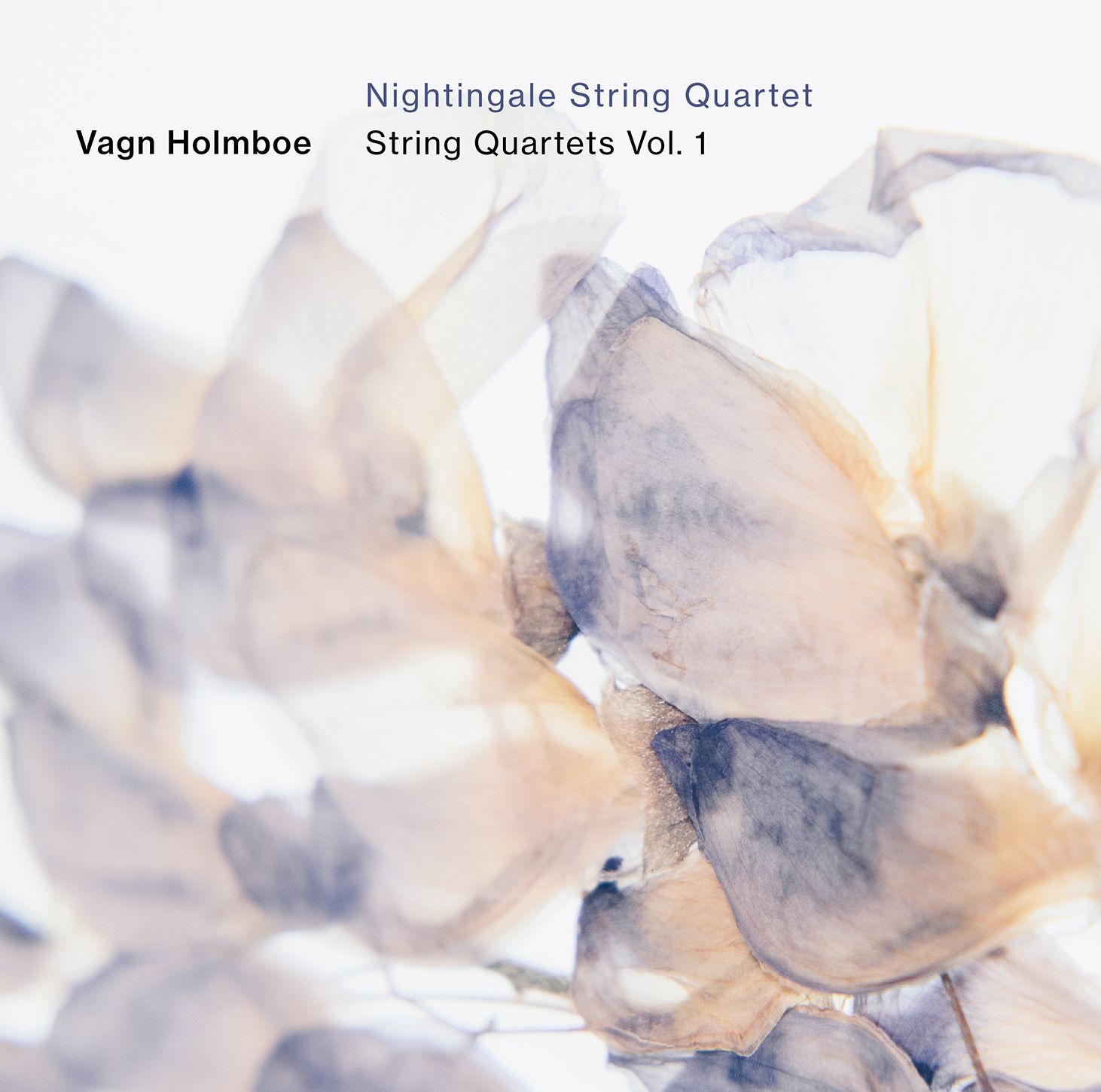Sing like a Nightingale: Vagn Holmboe and the string quartet
The virtuosity demonstrated by the Nightingale Quartet is astonishing. Recommended.

Before we get to wordy introductions, let's actually hear some of the music. The lyrical, lovely world of string quartets by Vagn Holmboe (1909-96) is beautifully portrayed in this wordless introductory video: atmospheric and haunting are certainly two adjectives that spring to mind:
The Danish Nightingale Quartet has previously won awards for its recordings of quartets by Ruud Langaard. Formed in 2007, the quartet consists of violinists Gunvor Sihm and Josefine Dalsgaard, violist Marie Louise Broholt and cellist Louisa Schwab.
Holmboe's orchestral works have received attention from the Swedish label BIS whic complement Dacapo's chamber music slant. Born in Jutland, Holmboe studied at the Royal Danish Academy of Music in Copenhagen, where Nielsen himself admitted him (although he did not study with the Master there); he later studied with Ernst Toch (whose works recorded on the cpo label are so worth seeking out: Symphonies Nos. 1 & 4; Nos. 2 & 3; plus his String Quartets Nos. 11 & 13). Also, readers who enjoy the string quartets of Bartók will enjoy this disc, for sure.
The string quartet medium was with Holmboe throughout his life, from teenager to deathbed. There are 22 in total. There are tinges of Shostakovich in the first movement of No. 1 (Op. 46, 1949) but the overwhelming influence is Bartók, who had died only four years previously. As Jens Cornelius' excellent booklet notes point out, the First Quartet begins with solo viola, just where Bartók's Sixth ended. There is no hurry to the first movement, marked "Affettuoso"; and there is certainly a rigour that the Nightingale String Quartet brings out beautifully, just as they enjoy Holmboe's dance-like figures.
Even the composer was flummoxed by his own second movement: "that movement is rather strange," he said, "I cannot analyse it myself". Mysterious is certainly the mot juste, including the sudden, interruptive, shard-like motifs that jut out like rugged coastal contours, then retreat just as suddenly:
If you listen to one excerpt in this article, listen to this one. There's no coming back ... you'll be hooked. The Nightingale's concentration is total, the recording crystal clear. Listening to this, it seems inconceivable that the third and final movement will find the four players landing on a C major chord, but such is Holmboe's mastery that it emerges like a ray of sun.
The title "No. 1" is misleading - although his first published quartet, there had been no fewer than ten unpublished before it, and you can hear the experience in the masterly manipulation of material. The move to the Third Quartet though is stark. Written in the same year (teh first three came as a wave of invention), The Third is more astringent, its predominant intervals a major seventh and a minor ninth; again, Bartók's shadow is there in the five movement arch form, and again, C major makes an appearance (at the end of the third movement). And again, I can hear snippets of Shostakovich in the background from time to time. Here's the whole first movement:
The harmonic mastery of Holmboe is staggering; the anguished harmonies of the penultimate fourth movement, an Allegro risoluto, have an almost Schoenbergian frenzy to them; how amazing that the close of that movement is so decisive. And the sheer enigma that is the finale (effectively a slow epilogue) is masterly.
And so to Holmboe's Op. 135, his 15th String Quartet dating from 1978. The last three of Holmboe's quartets (Nos. 14-16) are unified by a tiny motif that was Holmboe's own personal earworm; it is aptly described in the booklet notes as a "seagull's cry". The music is by now astonishingly profound; I wonder if I am alone in hearing late Beethoven in the slow crawl of the melodic lines and the anguished harmonies of the third movement, "Funèbre"?:
It is no surprise, given the intensity of this movement, that it haunts the fourth movement too. Motifs stretch across the divide before the quickfire finale, the seagulls returning at the work's close.
Interesting that we have two major quartet cycles unfolding now: the Weinberg cycle on Chandos and this one.
The virtuosity demonstrated by the Nightingale Quartet is astonishing. Recommended.
